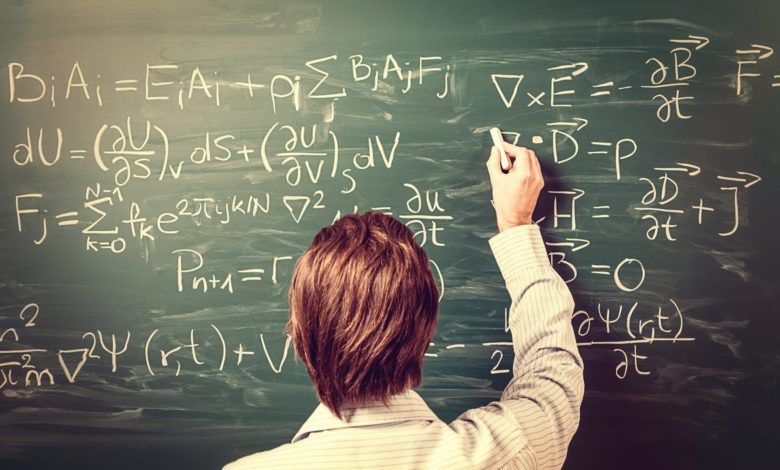
Math Phobia
According to the Programme for International Student Assessment, 59 percent of adolescents think mathematics is complex, and 31 percent report experiencing high levels of math anxiety when solving math problems. Mathematics usually snags one of the top spots in being the ‘most challenging’ or ‘most disliked’ subject in school. In the United States, the situation seems to be even grimmer. American students continue to score poorly in math, relative to their international counterparts. Approximately 93 percent of Americans have experienced math anxiety. American high school graduates’ average performance in mathematics has also been declining. So, where are we going wrong? Are Americans inherently inept at math?
The answer is a resounding “no.” While every student is uniquely talented, mathematical thinking can be learned. There is a belief in society that ”you are either good at math or you are not,” which makes it easy for students to give up on it. Consequently, the onus to make mathematics appealing and approachable falls on parents and elementary school instructors.
The Challenge
The current education system focuses on memorizing formulas and ‘tricks’ to solve problems and achieve good grades. Students keep attempting similar types of questions over and over again, but never truly understand the concept. They are left wondering, “Why do I have to solve these Xs and Ys?” or ”Who on Earth conjured up calculus?” or ”How is this ever going to be relevant?” These are all reasonable questions that deserve to be answered. Answering the “whys” makes the “how” more approachable. For an artist, math is relevant for perfecting shapes. For a historian, math helps understand historical data. And for a biologist, math can help understand the numbers hidden in the DNA. Math permeates into everything — it is the language of the universe. The omnipresence of math can be used to strengthen STEM education. The goal is not to transform everyone into a math genius; the goal is to arm everyone with the math skills necessary for their future careers.
The Solution
STEM graduates are in high demand and earn significantly more than their non-STEM counterparts, even if they end up in a non-STEM field. Some level of coding and data-crunching skills are needed in every domain. And for those at the forefront of science and technology, a strong foundation in pure and applied mathematics is integral.
In today’s rapidly advancing technological world, it is impossible to avoid data, technology and math. The CHIPS and Science Act recently laid out stipulations to establish America as the leader in science and technology and outcompete its global competitors. The CHIPs Act precedes the deliberations on the Mathematical and Statistical Modeling Education Act which was introduced in the House in May 2021. One year later, it passed the house. The bill is backed by House Representatives Houlahan and Baird and Senators Hassan and Blackburn. This bill recognizes the importance of improving K-12 STEM education in the United States.
The bill directs the National Science Foundation (NSF) to provide funding to educational institutions and non-profit organizations to develop plans for improving statistical and mathematical modeling curricula in public schools. It also advises the director of NSF to enter into an agreement with the National Academies of Sciences, Engineering, and Medicine to conduct studies on practices that would improve STEM learning and obtain feedback from stakeholders. To carry out these functions, $1 million is to be allocated to the NSF.
Why Model?
Mathematical models are an attempt to decipher the natural world. They are an abstraction of reality. In 1969, Katherine Johnson computed the path of Apollo 11 that enabled man’s first landing on the moon. The models developed during the Apollo mission are still used to control air traffic. Fractal geometry explains the shapes we see in nature — from leaves to snowflakes. Statistical analyses enable economists to judge levels of inflation and unemployment in a nation. The ecologist relies on the predator-prey model to determine optimum levels of harvesting in fisheries for food security while ensuring species survival. Even bettors use statistics to place their bets.
Providing hands-on experience to students to use mathematical and statistical modeling in their field of interest will help students cultivate mathematical rigor and temperament. This will expose students to a world beyond scores, and perhaps some will end up solving important problems for the world.
Recommendations
For many students, experience-based learning is the most effective form of learning. Engaging students in projects of their choice, under the guidance of experienced professionals, is essential to strengthening STEM education. The transitionary stages in school life can be especially hard; for instance, the jump from middle school to high school. One cannot move on to calculus without mastering basic algebra. Thus, supporting students through these transitionary phases is very important. As outlined in the bill, higher education institutions need to join hands with the public schooling system to build a better curriculum and train school teachers.
Different sectors can come together to establish interactive programs to train students with the technical skills needed in their field of choice. A good example of this is the HIP IMO Program at the Integrated Mathematical Oncology Department at Moffitt Cancer Center in Tampa, Florida. The program brings select high school students to intern at the cancer center where they use mathematics to better understand cancer. Students build theoretical models for cancer, analyze experimental data, and perform statistical analyses for clinical data. They learn on the go!
To evaluate the success of the programs approved by the NSF, appropriate metrics that measure interest, academic performance and skills learned need to be developed. Student success in their future careers can be a long-term measure.
The introduction of the Mathematical and Statistical Modeling Education Act comes at an appropriate time, with America realizing the increasing demands for STEM in all fields. Diligent research and execution of the bill proposed could potentially transform the face of STEM education and benefit Americans and the American economy.
The views expressed in this article are those of the author, and not necessarily those of IEEE-USA or IEEE.
Ranjini Bhattacharya is a Ph.D. student in the Integrated Mathematical Oncology Department at Moffitt Cancer Center, Tampa, FL. She completed her Bachelor’s degree in Biotechnology with a minor in Physics from Shiv Nadar University, India. She loves to work at the interface of biology and physical sciences. Her research focuses on developing evolutionary therapeutic models for cancer patients.






